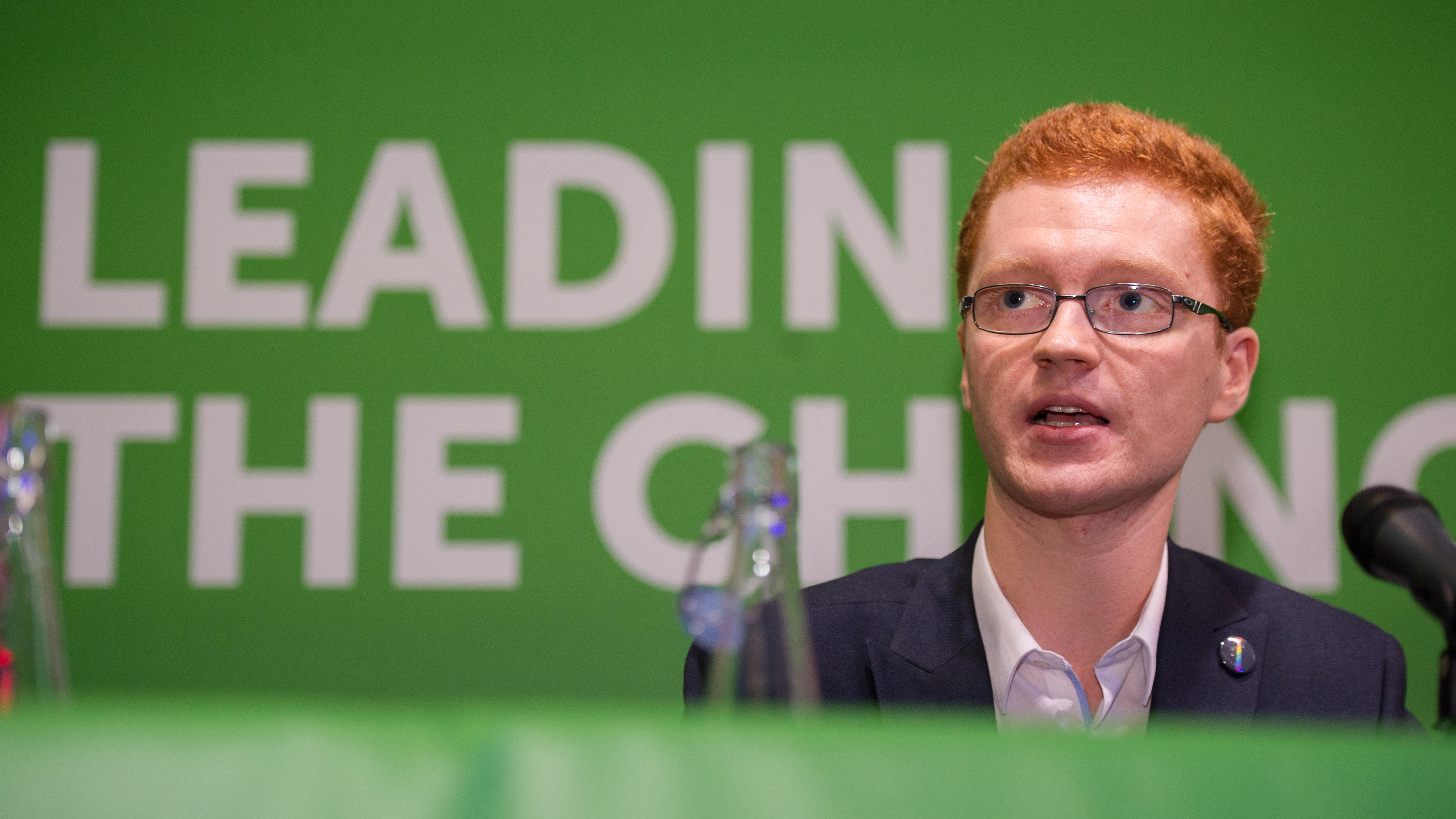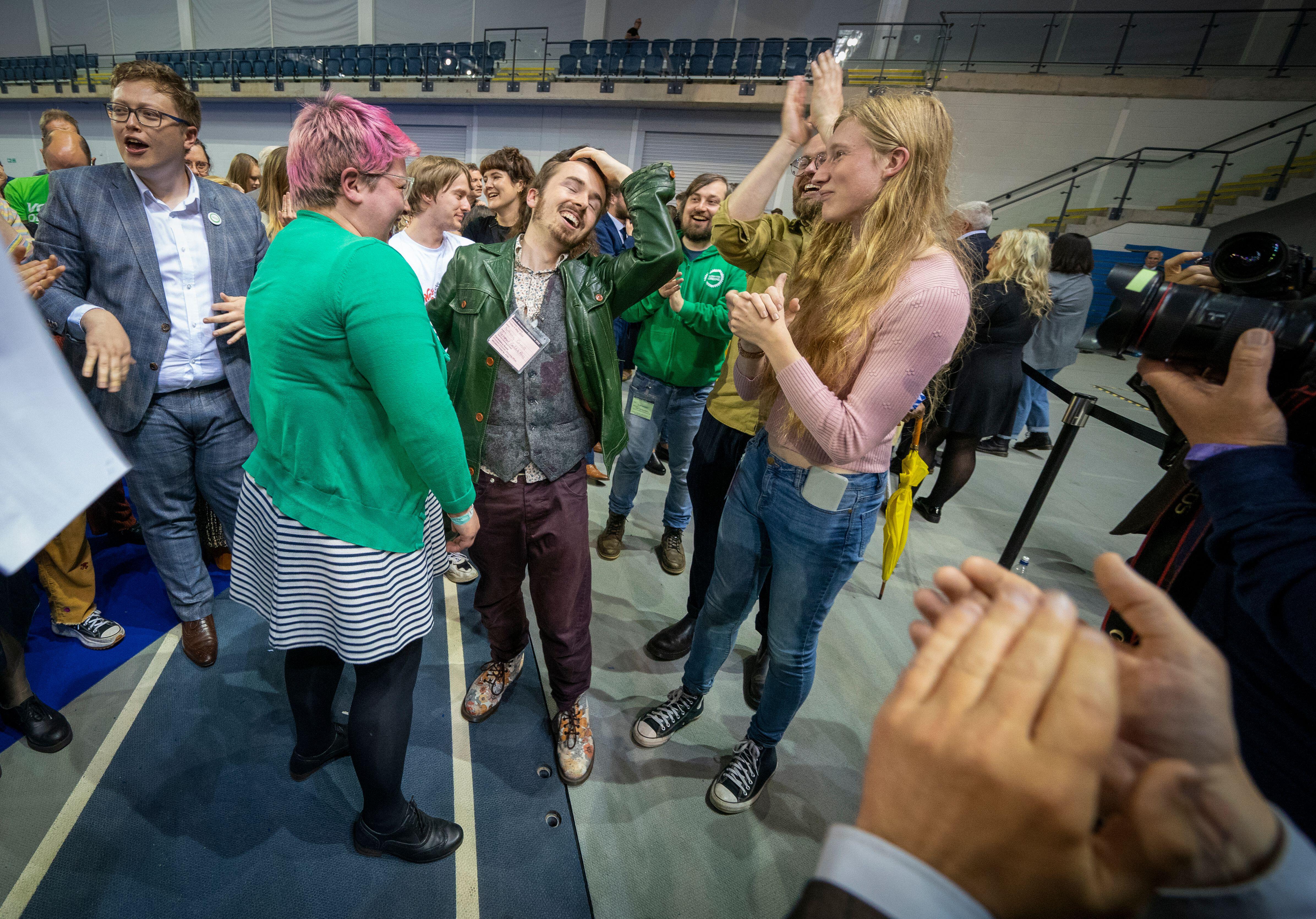Scottish Greens: Who will lead the party into the 2026 Holyrood election?
The first contested leadership election for the Scottish Green Party in six years has begun.
It follows the announcement by the party’s long-standing MSP Patrick Harvie that he will not seek re-election as co-leader. He’s been at the helm since 2008.
Nominations for candidates opened last week and will close on Friday 25 July, after which the campaign period begins ahead of the ballot opening on 13 August.
The result will be announced some time towards the end of August.
Unlike other political parties, the Scottish Greens hold a leadership vote every two years and elect two co-leaders. But more often than not, these have not been contested – with the membership agreeing incumbents can continue.
The last contested election took place in 2019, incidentally the first time the party elected co-leaders (previously the role had been co-conveners).
That saw Harvie easily take one of the newly rebadged roles, while Lorna Slater won the race ahead of Maggie Chapman, who had been co-convener alongside Harvie since 2013.
But with Harvie now stepping down after 17 years at the forefront of Green politics (though he hopes to continue as an MSP next year), internal divisions have started to come to the fore.
This contest is being seen as a battle for the heart of the Scottish Greens. So, who are the runners and riders?
Lorna Slater
Shortly after Harvie’s announcement that he would step down, Slater confirmed that she would be standing.
The Lothian MSP was elected co-leader before she was elected to the Scottish Parliament, initially doing the role alongside a job as a project manager in the renewables sector.
She entered government just months after becoming an MSP in 2021, as part of the Bute House Agreement between the SNP and Greens. As Minister for Green Skills, Circular Economy and Biodiversity, she oversaw the failed roll-out of the deposit return scheme – on which she would survive a vote of confidence brought by the Conservatives.
Slater faces lots of competition from within the Lothian Greens but should have no problem topping the list, making her return to parliament after next year quite comfortable.
Gillian Mackay
Also a fresh face in 2021, Mackay is the Greens first-ever parliamentary representative for the Central Scotland area.
She’s had an extremely successful first term, proving her ability to reach across political divides for a purpose. She shepherded her Abortion Services (Safe Access Zones) (Scotland) Bill through parliament, winning cross-party support to establish ‘buffer zones’ around abortion clinics.
And she was also instrumental in managing the SNP/Green relationship throughout the Bute House Agreement as business manager. While that ultimately ended, she maintains a good working relationship with many MSPs.
Announcing her intention to stand as co-leader, she said it was “important that we have women with big voices and ideas” on the frontline of politics while it is “dominated by the egos of men”.
Ross Greer

Long considered the eventual successor to Harvie, Greer was elected at the age of 21 back in 2016 for the West Scotland region.
When announcing his candidacy, he pointed to the party's time in government as a key success, saying: "We’ve seen how absolutely transformative it is when Greens are in a position to turn our vision into reality."
However, he’s a somewhat controversial figure within the Green party because the Bute House Agreement has since panned by some members for not delivering enough. Some within the party are concerned his election would be the business-as-usual approach and are calling for a more radical shift.
Maggie Chapman
Could the former co-convener be about to make a comeback? While unlikely, Chapman is not one to swerve a challenge and may just see this as an opportunity.
Elected to the Scottish Parliament for the first time in 2021, she was previously a councillor in Edinburgh for eight years. She served as rector of Aberdeen University between 2015 and 2021.
However, she may choose to direct her attention towards retaining her seat in next year’s election. Not only is she facing an internal challenge – from a former staffer, no less – but a place at the top of the North East Scotland list may not guarantee a position at Holyrood. That’s because victory for the SNP in the constitencies means it could be over-represented in the region as a whole, resulting in the available list seats going to the Tories and Reform, not the Greens.
Ellie Gomersall
This firebrand is central to a plan to oust Harvie from parliament completely, currently campaigning as part of the “Radical Future for Glasgow” group alongside activist Iris Duane and Hillhead councillor Seonad Hoy. Gomersall is hoping to be placed first on the Glasgow regional list next year.
Previously president of NUS Scotland, Gomersall resigned as co-chair of the Greens’ executive committee at the end of 2023, blaming “increased factionalism, hostility and toxicity” within the party. A self-style “radical, left-wing socialist”, Gomersall has not confirmed an intention to stand for the leadership but is reportedly encouraging some of Glasgow’s councillors instead.
Anthony Carroll

There are plenty within the party who believe local government ought to be given more prominence – and what better way to do that than electing a councillor leader.
One of the hopefuls might be Dennistoun councillor Anthony Carroll. He has represented that part of Glasgow since the 2022 election, and he is also one of the city’s bailies.
He previously told the Herald that members had encouraged him to stand, and he believes the party must ensure “balance” between local government and Holyrood. “Whenever I go knocking on doors, Holyrood sometimes seems so detached to voters as Westminster does to a lot of people,” he said.
Dan Hutchison
Another Glasgow councillor, Hutchison represents the Govan ward. Like Carroll, he has expressed concern about the lack of attention the party’s MSP pay to local government. Writing on the Green Left Scotland blog, he said he wanted a leader who wasn’t “swept up in the circus of Holyrood”.
“For four years now, both our co-leaders have been MSPs and for most of that, government ministers. It’s totally understandable why their focus was on the jobs they do. We’re at a crossroads now though. Any time political parties see a shift in leadership, it absolutely is the right time to stop, reflect and consider what we can do better next time,” he added.
It is unlikely two Glasgow councillors will stand, however, and Holyrood understands the local membership is coalescing around Carroll.
Guy Ingerson
Ingerson is currently running to be a candidate in the North East – seeking to come ahead of incumbent Chapman, for whom he used to work. He had pledged to bring “decency, honesty, and compassion in our politics”.
As a former oil and gas worker, he believes he can “reach out beyond [the Greens’] base”. He convenes the Aberdeen and Aberdeenshire branch, an area where the Green vote has strengthened in recent years.
Ingerson ran for election in the inaugural co-leadership race in 2019, coming in fourth with just 7.5 per cent of the vote. Might he try again? At the time, he spoke about needed to offer a “progressive and pragmatic” alternative to the status quo – in particular demanding action on the net zero economy.
Other wild cards
Of course, party rules mean that anyone who is a member can run to be leader. No doubt that means there will be some names who we’ve not heard of put forward.
But with a range of opinions, and no small amount of infighting, already apparent – this leadership election could be pivotal for the future of the Scottish Greens.
Holyrood Newsletters
Holyrood provides comprehensive coverage of Scottish politics, offering award-winning reporting and analysis: Subscribe